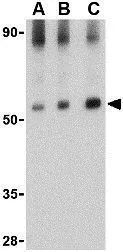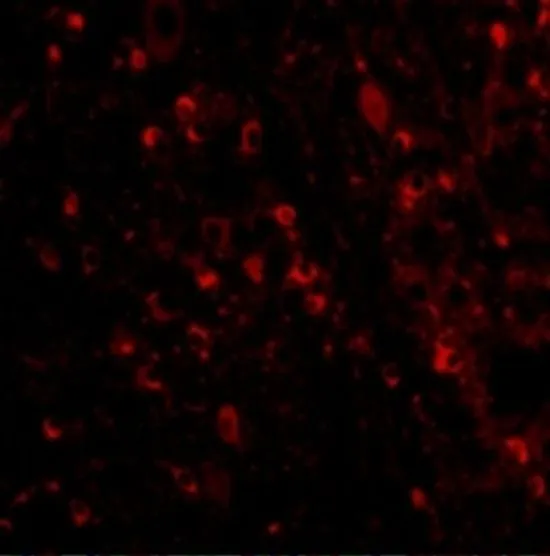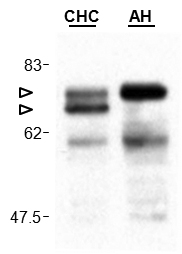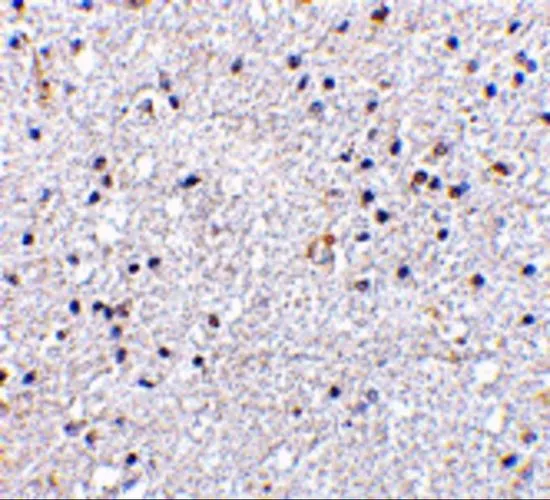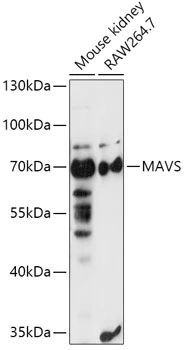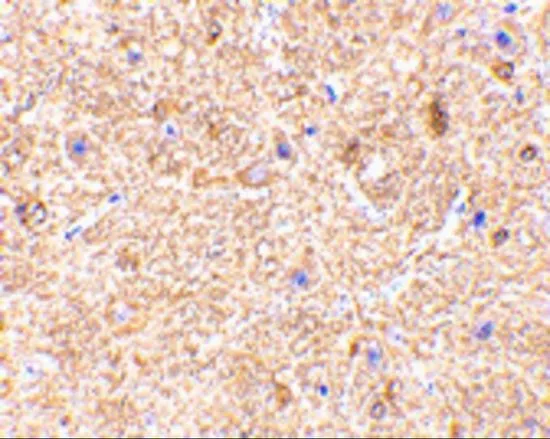
IHC-P analysis of mouse brain tissue using GTX85480 VISA antibody. Working concentration : 2.5 microg/ml
VISA antibody
GTX85480
ApplicationsWestern Blot, ELISA, ImmunoHistoChemistry, ImmunoHistoChemistry Paraffin
Product group Antibodies
ReactivityHuman, Mouse, Rat
TargetMAVS
Overview
- SupplierGeneTex
- Product NameVISA antibody
- Delivery Days Customer9
- Application Supplier NoteWB: 0.5 - 2 microg/mL. IHC-P: 2.5 microg/mL. *Optimal dilutions/concentrations should be determined by the researcher.Not tested in other applications.
- ApplicationsWestern Blot, ELISA, ImmunoHistoChemistry, ImmunoHistoChemistry Paraffin
- CertificationResearch Use Only
- ClonalityPolyclonal
- Concentration1 mg/ml
- ConjugateUnconjugated
- Gene ID57506
- Target nameMAVS
- Target descriptionmitochondrial antiviral signaling protein
- Target synonymsCARDIF, IPS-1, IPS1, VISA, mitochondrial antiviral-signaling protein, CARD adapter inducing interferon beta, CARD adaptor inducing IFN-beta, IFN-B promoter stimulator 1, interferon beta promoter stimulator protein 1, putative NF-kappa-B-activating protein 031N, virus-induced signaling adaptor, virus-induced-signaling adapter
- HostRabbit
- IsotypeIgG
- Protein IDQ7Z434
- Protein NameMitochondrial antiviral-signaling protein
- Scientific DescriptionTwo distinct signaling pathways activate the host innate immunity against viral infection. One pathway is reliant on members of the Toll-like receptor (TLR) family while the other uses the RNA helicase RIG-I as a receptor for intracellular viral double-stranded RNA as a trigger for the immune response. VISA is a mitochondrial membrane protein that was identified as a critical component in the IFN-b signaling pathways that recruits IRF-3 to RIG-I, leading to its activation and that of NF-kappaB. VISA is also thought to interact with other components of the innate immune pathway such as the TLR adapter protein TRIF, TRAF2 and TRAF6. VISA also interacts with the IKKalpha, IKKbeta and IKKepsilon kinases through its C-terminal region. Cleavage of this region by the Hepatitis C virus (HCV) protease allows HCV to escape the host immune system. At least three isoforms of VISA are known to exist.
- ReactivityHuman, Mouse, Rat
- Storage Instruction-20°C or -80°C,2°C to 8°C
- UNSPSC12352203

